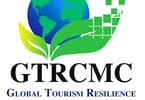The government of Tanzania will construct a monument and podium to preserve the archaeological site where the first species hominid Zinjanthropus boiesei Skull was discovered by Dr. Mary Leakey on July 17, 1959 in Olduvai Gorge, part of the Ngorongoro Conservation Area in Northern Tanzania.
This announcement was made at the 50th Anniversary of Olduvai Gorge at a recent conference held at the Arusha International Conference Center. This 5-day event was attended by more than 200 delegates and scientists from around the world. The architectural rendering was developed by Ardhi University and submitted to the Ministry of Natural Resources and Tourism to be completed in 2011.
In the five days of the Golden Anniversary celebration, a number of papers on the hominin fossil, (Palaeoenvironment at Olduvai, Stone Ages, Rock Arts, and Cultural Resource and Heritage Management) were presented and discussed by delegates.
The discovery of Zinjanthropus boisei at Olduvai Gorge together with the oldest existing footprints at Laitole (3.6 million years of age), further verifies that the origins of the human species was in the Ngorongoro Conservation Area in Tanzania, and not in Asia as previously thought. In keeping with the significance of this information, Olduvai Gorge is now known as The Cradle of Mankind while Laetoli holds the only undisputable evidence for Human Bipedalism.
“Although many other important discoveries have been made at Olduvai, Laetoli and other east African hominid sites, the Olduvai Zinj will always remain a national and international icon of Tanzania‘s central place in our understanding for the first time the basic outline of the course of human evolution over the last two million years,” said Mr. Peter Mwenguo, the managing director of the Tanzania Tourist Board.
For fifty years since the discovery of Zinj, Olduvai Gorge has played a major scientific role as a center for research in palaeoenvironment, ecology, paleontology, archaeology, geology, and many other disciplines conducted by both national and foreign research teams. The site has continued to attract more tourists and has yield new scientific findings which have added more value to the records of human evolution. The significance of Olduvai and Laetoli has led to the elevation of the Ngorongoro Area Conservation to be nominated as a World Heritage site in 2008 to incorporate both natural and cultural outstanding universal values.
About Tanzania
Tanzania, the largest country in east Africa, is focused on wildlife conservation and sustainable tourism, with approximately 28 percent of the land protected by the government. It boasts 15 national parks and 32 game reserves. It is the home of the tallest mountain in Africa, the legendary Mt. Kilimanjaro; The Serengeti, named in October, 2006, the New 7th Wonder of the World by USA Today and Good Morning America; the world acclaimed Ngorongoro Crater, often called the 8th Wonder of the World; Oldupai Gorge, the cradle of mankind; the Selous, the world’s largest game reserve; Ruaha, now the second largest National Park in Africa; the spice islands of Zanzibar; and seven UNESCO World Heritage Sites. Most important for visitors, the Tanzanian people are warm and friendly, speak English, which together with Kiswahili, are the two official languages, and the country is an oasis of peace and stability with a democratically-elected and stable government.
Shown in Photo: The Arusha Regional Commissioner Mr. Isdori Shirima opens a curtain to symbolize Zinjanthropus Pedestal Inauguration at Olduvai Gorge in Ngorongoro Conservation Area Arusha Tanzania.
WHAT TO TAKE AWAY FROM THIS ARTICLE:
- “Although many other important discoveries have been made at Olduvai, Laetoli and other east African hominid sites, the Olduvai Zinj will always remain a national and international icon of Tanzania‘s central place in our understanding for the first time the basic outline of the course of human evolution over the last two million years,” said Mr.
- The significance of Olduvai and Laetoli has led to the elevation of the Ngorongoro Area Conservation to be nominated as a World Heritage site in 2008 to incorporate both natural and cultural outstanding universal values.
- In the five days of the Golden Anniversary celebration, a number of papers on the hominin fossil, (Palaeoenvironment at Olduvai, Stone Ages, Rock Arts, and Cultural Resource and Heritage Management) were presented and discussed by delegates.






















